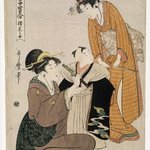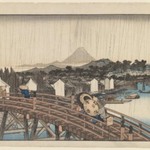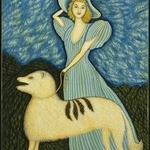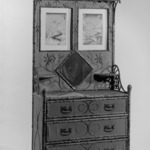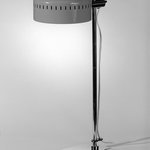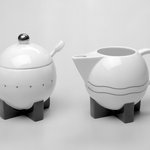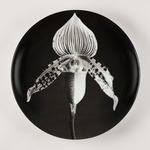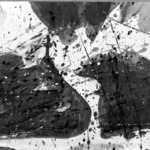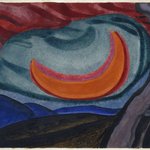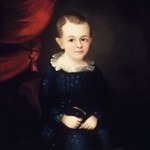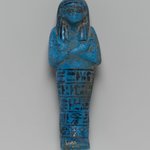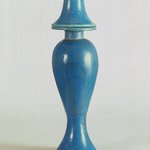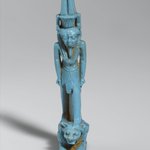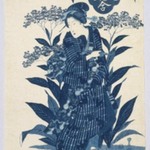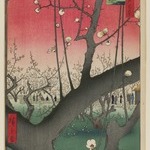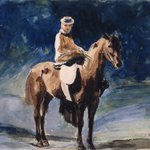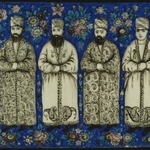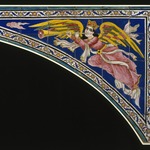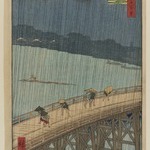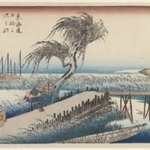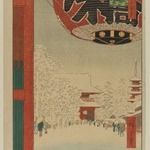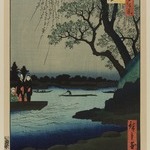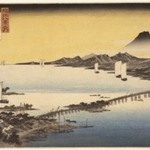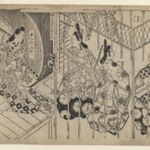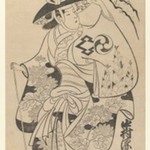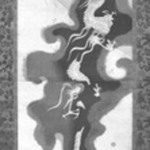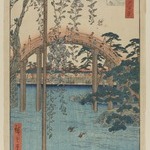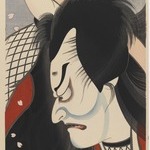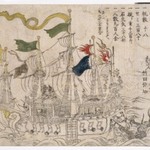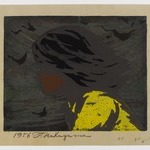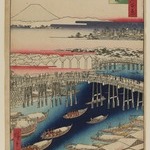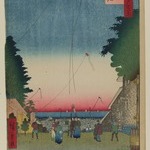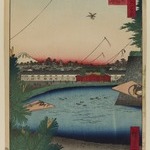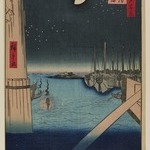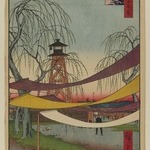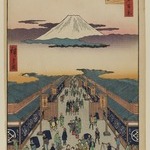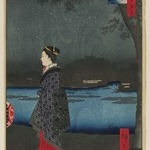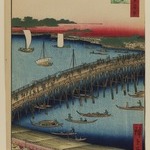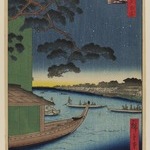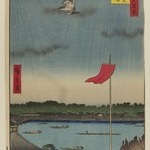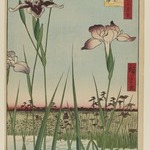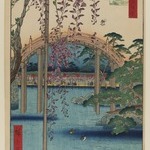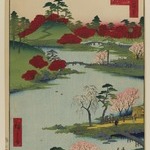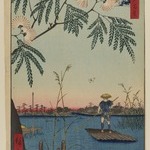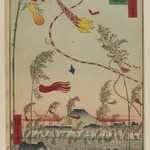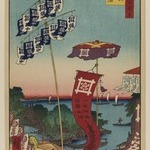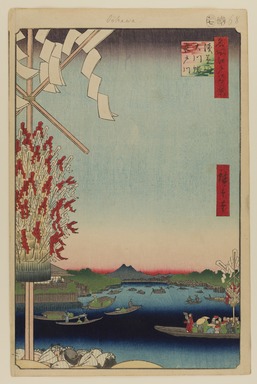
Asakusa River, Great Riverbank, Miyato River, No. 60 from One Hundred Famous Views of Edo
Utagawa Hiroshige
Asian Art
The point of view here is looking north from just under Ryogoku Bridge. Hiroshige provides a characteristically indirect depiction of one of the most interesting summer customs associated with the bridge, the ablutions of the Mount Oyama pilgrims. Instead of showing the spot under the bridge where they rinsed themselves before setting out for the sacred mountain, this view features pilgrims returning from the ablution site. The bonten, or huge assemblages of ritual paper strips dominating the composition, were used by the ascetics who spread the Oyama cult. The title of the print may seem confusing, since Asakusa River, Great Riverbank, and Miyato River all refer to the same river—the Sumida.
MEDIUM
Woodblock print
DATES
7th month of 1857
PERIOD
Edo Period, Ansei Era
DIMENSIONS
Sheet: 14 5/16 x 9 5/16 in. (36.4 x 23.7 cm)
Image: 13 x 8 1/2 in. (33 x 21.6 cm) (show scale)



MARKINGS
No publihser's seal visible, probably lost when left margin was trimmed. Date seal and censor seal in top margin.
SIGNATURE
Hiroshige-ga
COLLECTIONS
Asian Art
ACCESSION NUMBER
30.1478.60
CREDIT LINE
Gift of Anna Ferris
PROVENANCE
Prior to 1930, provenance not yet documented; by 1930, acquired by Anna Ferris of Summit, NJ; 1930, gift of Anna Ferris to the Brooklyn Museum.
Provenance FAQ
CATALOGUE DESCRIPTION
A view of one of the more interesting summer customs associated with the Ryogoku Bridge, the ablutions of the Mount Oyama pilgrims. The pilgrims rinsed themselves in the waters of the Sumida as an act of ritual purification before journeying to the sacred Mount Oyama, some forty miles to the south. The ritual was designed to greet the summer by purging the noxious spirits of the season. This view shows two groups of pilgrims returning by boat from the ablution site to the boat landing at Yanagibashi, where the Kanda River flows into the Sumida (suggested by the horizontal bank of deep blue). The yamabushi or mountain ascetics were responsible for the spread of the Oyama cult through the Kanto region, recruiting groups of pilgrims to climb the mountain. As they crossed the river, the pilgrims chanted ritual phrases and after their ablutions would proceed through the streets of downtown Edo, distributing the gohei (ritual paper strips). There is confusion regarding the title of this print because Asukagawa, Okawa and Mitayogawa are all alternate names for the Sumida River. (The title of the print was changed in later printings to "In Boats at Ryogoku with a Distant View of Asakusa.")
EXHIBITIONS
MUSEUM LOCATION
This item is not on view
CAPTION
Utagawa Hiroshige (Japanese, 1797–1858). Asakusa River, Great Riverbank, Miyato River, No. 60 from One Hundred Famous Views of Edo, 7th month of 1857. Woodblock print, Sheet: 14 5/16 x 9 5/16 in. (36.4 x 23.7 cm). Brooklyn Museum, Gift of Anna Ferris, 30.1478.60 (Photo: Brooklyn Museum, 30.1478.60_PS20.jpg)
IMAGE
overall, 30.1478.60_PS20.jpg. Brooklyn Museum photograph, 2023
"CUR" at the beginning of an image file name means that the image was created by a curatorial staff member. These study images may be digital point-and-shoot photographs, when we don\'t yet have high-quality studio photography, or they may be scans of older negatives, slides, or photographic prints, providing historical documentation of the object.
RIGHTS STATEMENT
No known copyright restrictions
This work may be in the public domain in the United States. Works created by United States and non-United States nationals published prior to 1923 are in the public domain, subject to the terms of any applicable treaty or agreement.
You may download and use Brooklyn Museum images of this work. Please include caption information from this page and credit the Brooklyn Museum. If you need a high resolution file, please fill out our online application form (charges apply).
The Museum does not warrant that the use of this work will not infringe on the rights of third parties, such as artists or artists' heirs holding the rights to the work. It is your responsibility to determine and satisfy copyright or other use restrictions before copying, transmitting, or making other use of protected items beyond that allowed by "fair use," as such term is understood under the United States Copyright Act.
The Brooklyn Museum makes no representations or warranties with respect to the application or terms of any international agreement governing copyright protection in the United States for works created by foreign nationals.
For further information about copyright, we recommend resources at the United States Library of Congress, Cornell University, Copyright and Cultural Institutions: Guidelines for U.S. Libraries, Archives, and Museums, and Copyright Watch.
For more information about the Museum's rights project, including how rights types are assigned, please see our blog posts on copyright.
If you have any information regarding this work and rights to it, please contact copyright@brooklynmuseum.org.
RECORD COMPLETENESS
Not every record you will find here is complete. More information is available for some works than for others, and some entries have been updated more recently. Records are frequently reviewed and revised, and we welcome any additional information you might have.
